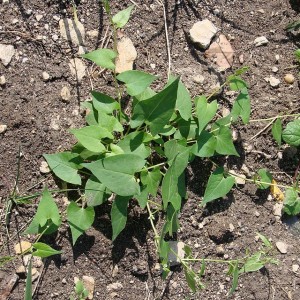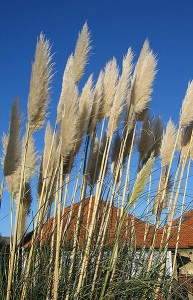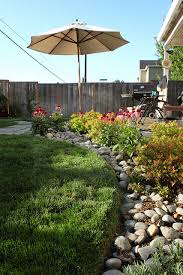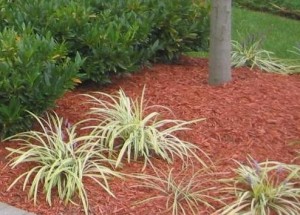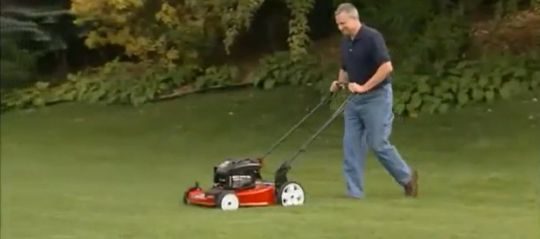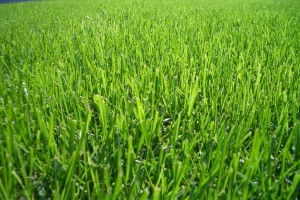Maintaining a gorgeous lawn over the full course of a year is tough work, so Mower Source likes to come up with quick and easy ways around that. Keep this handy cheatsheet with you all the time because it’s a great way to spruce things up in just one day.
As you push your lawn mower back and forth, you probably don’t think much about how to maximize what you’re doing. But adding one crucial element can change all that and you don’t even have to think twice about it.
Having a lush and healthy lawn isn’t always a matter of just watering and cutting it. To take it to the next level, mulching it is one of the best difference-makers in the game. But before you let that freshly cut grass fly all over your lawn, read these tips from Mower Source first and see how to be more strategic about mulching.
We hate to say the following words — but summer will soon be over and autumn is waiting just around the corner. Because of that, your lawn and garden need to be prepared for the upcoming cooler weather so you’ll have a lush, green yard next year. It doesn’t take too much work, as maintenance is far easier than letting things go and facing a mountain of work. In this Mower Source post, we’ll go over some of the things you’ll have to start looking at in the coming weeks to prepare your garden for the fall.
Get Rid of the Weeds
By far, one of the most important things you can do for your lawn and garden is keeping it free of weeds. You can use pesticides, but there’s no guarantee you’ll hit every single pest. Plus, dousing your lawn and garden in pesticides doesn’t exactly provide a hospitable environment for grass and plants to grow and thrive.
As much as everyone hates pulling weeds, it’s really the best way to go. The thought of bending down and yanking weed after weed is something that few people look forward to, but that’s because they don’t do it right. Instead, follow these tips to make the job much easier:
Treat the Soil
If you live in a northern state, like Wisconsin or Minnesota, you’re not used to year-long sunshine that’s strong and powerful. And if you go on vacation somewhere where the weather is like that, like Hawaii, then your skin will throw a little hissy fit. You know this, and prepare your skin by slathering on sunscreen.
Do the same for your soil, giving it a protective coating for the impending cooler air. Soil particularly likes compost and cover crops, with a thin layer of topsoil raked over a little bonus. For your grass, wait until the leaves start falling and then use your lawn mower to turn it into mulch. These measures are a little bit of rejuvenation for your lawn and garden, and help prime it until the sun pokes out again next spring.
Plant Cool Season Grasses
This tip applies to states where cooler weather is a regularity, not an exception. Putting in cool-season grasses — those that do the majority of their growing when the weather is cooler (not necessarily cold) rather than warmer. Some of the grasses you’ll be looking at include fescue and rye, and by planting before the frost hits, you’ll be giving the seeds a chance to spread and take root.
You’ll also want to apply a slow-release fertilizer, giving your grasses an extra bit of carbohydrates so they can stay “fed” during the cold months. It’s not a necessary step to take, but it will give your lawn a boost in looking healthy come spring.
And if you want to plant ornamental grasses for a gorgeous autumn look, try out fountain grass, red switch grass, feather reed grass or flame grass for amazing color and texture.
Mower Source has you covered on everything that has to do with your yard, from how to mow your grass properly to what a great garden should — and can — look like. And on every product you buy from us, we’ll send it over right away without charging a dime for taxes (except MN) and shipping.
Watering your lawn and mowing it are just two of the steps you need in order to make sure it’s green and healthy. But like the hair on the top of your head, there’s more involved than just shampooing and trimming it. You need to devote a bit of time into bringing your lawn to its full potential, and if you take the steps now, it’ll be a lot easier than later in the season.
Benefits of Mulching Your Lawn
Think of how you go about your day: you don’t just wake up, go to work, and then fall asleep again at the end of it, do you? Probably not. Instead, you take a shower so you feel good and smell clean, and eat a few meals so your body has enough energy to keep on ticking.
Your lawn is the same way in that it needs maintenance and nutrition. Mulching helps put back into the earth what others may consider lawn waste, and can save up to 25% of your fertilizing costs. Still not convinced? Mulching, when done properly, can help cut down on the weeds in your lawn because it cuts off one of most valuable resources they need: sunlight. A good layer of mulch keeps weeds shaded, preventing them from being able to suck the nutrients out of your lawn.
Mulching also acts as an air-conditioning blanket for your lawn by keeping the soil cool and shaded. You don’t need to be a scientist to know that the more sun exposed soil has, the more it can dry out. And the more it dries out, the less moisture there is for your grass to grow strong and healthy. By creating this barrier with mulch, you don’t have to worry about your lawn getting dried out or going out there constantly to water the grass.
How to Mulch Effectively
This isn’t a hard or complicated process at all, and just involves the following steps:
While it’s best to mulch your lawn in the fall, it never hurts to do it any time of year that you mow your lawn. Maintenance isn’t something you can do in one day, but rather have to work at it a little bit so your lawn is always lush, green and healthy.
You’ve read up on awesome mulching techniques, so now it’s time to make sure you’ve got one of our awesome lawn mowers to do the job. You can take a look at our selection here to find the one that’s best for you, and enjoy two great benefits: no tax on anything (except in Minnesota), and free shipping to the lower 48 states.
Your lawn’s health and appearance is one of the first things people notice when they drive by your house or stop in for a visit. If you want your lawn to be as lush and green as possible, consider using a mulching mower rather than bagging to produce an even healthier and more attractive lawn.
Improve Your Lawn’s Health
The mulching mower’s blade cuts each piece of grass several times and deposits those small particles back into your lawn. Ohio State University reports that those particles decompose within hours and deliver important nutrients into your lawn. Those nutrients include water and nitrogen.
Water is obviously an important need for any lawn’s health. Because each blade of grass contains up to 80 percent water, mulching it back into your lawn ensures your yard receives the valuable liquid nutrition it needs.
Nitrogen also nourishes your lawn. It’s a main ingredient in most commercial fertilizers. So, instead of tossing clippings into the recycling bin, burn pile or trash can, use them and their valuable nitrogen to deliver nourishment to your lawn every week.
In addition to water and nitrogen, mulched grass clippings contain other invaluable additives that keep your lawn healthy. These additives include calcium, iron, magnesium phosphorous and potassium. Each of these nutrients contributes to your lawn’s vibrant health and lush, green appearance.
Improve Your Lawn’s Appearance
A manicured lawn definitely looks neat. You don’t need to cut the grass super short, however, to achieve the appearance you want. Follow Cornell University’s rule of thumb and cut no more than one-third of the grass blades at one time. This way, your lawn stays beautiful, and the grass blades are long enough to recover sufficiently from weather changes, insects or disease.
Mulching Mower Sale
Mulching mowers give you a healthy, manicured lawn. Find the perfect mulching mower for your lawn when you shop at MowerSource.com. With free shipping on all mowers, you can save money while keeping your lawn nourished and lush all summer.
Resources:
http://ohioline.osu.edu/hyg-fact/1000/1191.html
http://www.gardening.cornell.edu/homegardening/sceneec8a.html
Want a lawn with more curb appeal? How you handle grass clippings affects the appearance and health of your lawn. Here are some tips on figuring out when you should bag grass clippings and when you should mulch.
When to mulch
If the grass is always greener on the other side, it might be because your neighbor is mulching instead of bagging. In most cases, mulching is a better idea than bagging, because the grass clippings act as fertilizer for your lawn and help it retain the moisture it needs to stay lush and healthy.
Worried about the appearance of your lawn by letting the grass clippings sit? Buy a mulching mower that cuts and re-cuts the grass clippings until they are barely noticeable, then forces the clippings deep into the lawn, where no one will notice them. You’ll get the best of both worlds: a clean-looking lawn and the nourishment your grass needs to keep it green.
Handled properly, mulching can:
- Make your lawn healthier by serving as fertilizer and helping your lawn retain moisture.
- Save time on mowing, since you don’t have to stop and empty the mower bag.
- Save money on lawn care—both on grass clipping disposal and because you won’t need to use as much fertilizer.
The key to avoid thatch buildup when leaving the grass clippings is to only cut the lawn no more than 1/3 of the blade at a time. Smaller mulching pieces will decompose rapidly, nourishing your lawn rather than causing problems.
When to bag
If by chance the grass has grown too long and you need to cut more than a 1/3 of the blade, that’s when bagging comes in handy.
Large clumps of grass clippings look bad—not to mention the fact that they can smother your lawn if they’re not raked evenly over the surface. So if you’ve been gone on vacation for a couple of weeks and come home to an overgrown lawn, bagging is a good option at that stage.
A bagging kit is also the best option if you want a pristine, manicured lawn without any mulch or grass clippings. By fertilizing your lawn, you can keep it just as green and lush as you can with a mulching mower or mulching kit.
Mulching Mower Sale
Need a mulching mower or a mulching kit? Mower Source offers mulching mowers and mulching kits for Toro, Husqvarna, and Ariens mowers. Get free shipping when you purchase your mulching mower or mulching kit from MowerSource.com!
Do you bag your grass clippings or leave them when you mow the lawn? While many people like to bag because it makes their lawn more attractive, an acre of bag clippings can use up to 260 bags each year! That is why many states require you to separate grass waste from your other waste. Here are some reasons why you should consider leaving your clippings on your lawn the next time you mow.
Why should I mulch?
Grass contains nitrogen, phosphorus and potassium. By keeping your grass clippings you can use them as a ‘natural fertilizer’. Mulching will reduce the amount of water that your lawn needs. The healthier your lawn is the more efficiently the roots will absorb water. Another reason why mulching is beneficial is that since grass is 100% biodegradable you can incorporate the clippings into your compost pile.
What about Thatch?
A common argument against mulching is that it causes thatch. Thatch is a layer of living and dead organic matter that chokes out new growth. Many people believe that mulching can cause thatch. Thatch is actually caused by over fertilization and over watering. This causes the lawn to grow excessively fast.
Looking For Promotions, Discounts, and Coupons?

